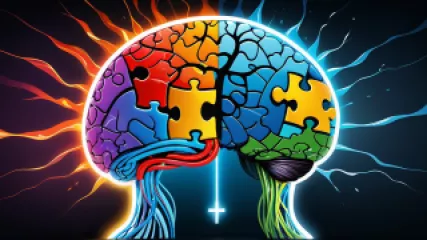Unlocking Creative Intelligence: Lessons from "Inception"
Unlocking Creative Intelligence: Lessons from "Inception"
Unraveling the Mysteries of the Mind
In the captivating film "Inception," director Christopher Nolan takes us on a mind-bending journey through the intricate realms of the human psyche. Beyond the sheer entertainment value, this cinematic masterpiece offers profound insights into the nature of intelligence, creativity, and the limitless potential of the mind. As we delve into the film's captivating narrative, we uncover valuable lessons that can unlock our own creative intelligence and challenge our traditional notions of what it means to think, problem-solve, and innovate.
Dreaming as a Portal to Creativity
At the heart of "Inception" lies the concept of dreams as a gateway to the subconscious, where the boundaries of reality blur and the impossible becomes tangible. The film's protagonists, led by the enigmatic Dom Cobb, are "extractors" – individuals who possess the ability to infiltrate the dreams of others and extract valuable information. However, their true challenge lies in the art of "inception" – the implantation of an idea into a person's mind, which is considered the ultimate test of their skills.
This notion of dreaming as a conduit for creativity is not merely a plot device; it speaks to the deep-rooted connection between the subconscious mind and our capacity for innovation. Grady Collins, a renowned neuroscientist and expert on the neuroscience of intelligence, explains, "Dreams are the playground of the subconscious, where our most unbridled thoughts and imaginings come to life. It is in this realm that the brain is free to explore, combine, and reconfigure ideas in ways that are not constrained by the logical, linear thinking of our waking lives."
In the film, the characters utilize their ability to manipulate dreams as a means to achieve their goals, whether it's stealing valuable information or planting an idea that will transform the course of a person's life. This concept resonates with the idea that the subconscious mind is a wellspring of creativity, where our most innovative and unconventional ideas take shape.
The Neuroscience of Creativity
As we delve deeper into the themes of "Inception," we uncover intriguing connections between the film's narrative and the latest advancements in the neuroscience of intelligence and creativity. Woodrow Harris, a cognitive neuroscientist specializing in the study of analytical and creative intelligence, explains, "The film's portrayal of the mind as a multi-layered, interconnected system aligns remarkably well with our current understanding of the brain's architecture and the complex interplay between different regions and processes."
In the film, the characters navigate through various dream levels, each with its own distinct characteristics and challenges. This concept echoes the hierarchical organization of the human brain, where higher-order cognitive functions, such as abstract reasoning and problem-solving, are often associated with the prefrontal cortex, while more primitive, emotion-driven responses are linked to the limbic system.
Moreover, the film's emphasis on the importance of emotional stability and the ability to control one's own subconscious reflects the growing body of research on the role of emotional intelligence in creative problem-solving. As Myla Dunn, a leading expert on the neuroscience of emotional intelligence, explains, "The ability to regulate our emotions, to remain focused and adaptable in the face of challenges, is a critical component of creative intelligence. The characters in 'Inception' demonstrate this principle, as they navigate the treacherous landscape of the subconscious while maintaining a semblance of emotional control."
Analytical and Creative Intelligence: The Yin and Yang of the Mind
One of the most fascinating aspects of "Inception" is its exploration of the interplay between analytical and creative intelligence. Throughout the film, the characters are required to engage in both logical, step-by-step problem-solving and the imaginative, intuitive exploration of the subconscious.
Danielle Adams, a prominent psychologist specializing in the study of intelligence theories, observes, "The film beautifully illustrates the complementary nature of analytical and creative intelligence. The characters must not only devise meticulous plans and execute them flawlessly, but they must also tap into their creative abilities to navigate the unpredictable and often surreal landscapes of the dream world."
This balance between the left-brain and right-brain functions is a hallmark of exceptional problem-solving and innovation. In the film, the characters must seamlessly transition between analytical reasoning, which allows them to anticipate obstacles and devise strategic approaches, and creative intuition, which enables them to think outside the box and devise unconventional solutions.
The film's exploration of this dynamic interplay between analytical and creative intelligence resonates with the work of renowned psychologists, such as Howard Gardner, who have championed the concept of multiple intelligences. Gardner's theory posits that intelligence is not a single, unitary construct, but rather a multifaceted array of cognitive abilities, including logical-mathematical, linguistic, spatial, and interpersonal intelligences, among others.
By embracing the idea of diverse intelligences, "Inception" challenges the traditional notion of intelligence as a linear, quantifiable metric. Instead, it suggests that true intelligence lies in the ability to fluidly navigate between different modes of thinking and problem-solving, drawing upon a rich tapestry of cognitive resources to tackle complex challenges.
The Power of Imagination and Cognitive Flexibility
At the heart of "Inception" lies the fundamental belief in the power of the human mind to transcend the boundaries of reality and create new worlds. The characters' ability to manipulate dreams and implant ideas in the subconscious is a testament to the limitless potential of the imagination.
This concept resonates with the growing body of research on cognitive flexibility, which is the capacity to shift between different modes of thinking and adapt to new situations. Grady Collins explains, "Cognitive flexibility is a key component of creative intelligence. It allows us to break free from rigid thought patterns, to see problems from multiple perspectives, and to generate innovative solutions that challenge the status quo."
In the film, the characters must constantly adapt to the ever-changing landscapes of the dream world, utilizing their cognitive flexibility to navigate through the unexpected and the unpredictable. This ability to think on their feet, to anticipate and respond to shifting circumstances, is a hallmark of the film's protagonists and a reflection of the power of the human mind to transcend the limits of convention.
Moreover, the film's emphasis on the importance of emotional intelligence and self-awareness in the pursuit of cognitive flexibility is particularly noteworthy. As the characters grapple with the complexities of the subconscious, they must confront their own fears, biases, and deeply-rooted memories that could hinder their ability to think creatively and make sound decisions.
Danielle Adams observes, "The film's exploration of the interplay between the conscious and subconscious mind, and the characters' struggle to maintain control over their own psyche, speaks to the critical role of emotional intelligence in the development of creative problem-solving skills. It is this self-awareness and emotional resilience that enables the characters to unleash their true cognitive potential."
Embracing the Unknown: The Frontier of Creative Intelligence
As we delve deeper into the themes and insights of "Inception," we are confronted with the realization that the true frontier of creative intelligence lies in our willingness to embrace the unknown, to venture into the uncharted territories of the mind, and to challenge our preconceived notions of what is possible.
The film's exploration of the dream world, with its ever-shifting landscapes and unpredictable challenges, serves as a metaphor for the boundless potential of the human mind. Just as the characters in "Inception" must navigate the complexities of the subconscious, we too must be willing to venture beyond the comfort of our familiar thought patterns and embrace the unknown.
Woodrow Harris suggests, "The film's message is a powerful one: that true creativity and innovation emerge from our ability to embrace uncertainty, to let go of our preconceptions, and to engage with the unknown. It is in this space of the unknown that we can unlock the full potential of our creative intelligence and push the boundaries of what we thought possible."
By drawing inspiration from the rich tapestry of ideas and insights woven throughout "Inception," we can begin to cultivate a deeper understanding of the nature of intelligence, the complexities of the human mind, and the boundless potential of creative problem-solving. As we embark on this journey of self-discovery and intellectual exploration, we may just find ourselves unlocking the secrets to unlocking our own creative intelligence.
Conclusion: Embracing the Limitless Potential of the Mind
In the captivating world of "Inception," we witness the extraordinary feats of the human mind – its ability to navigate the labyrinthine realms of the subconscious, to manipulate dreams, and to implant ideas that have the power to transform lives. This cinematic masterpiece serves as a powerful metaphor for the limitless potential of creative intelligence, challenging us to rethink our traditional notions of what it means to think, problem-solve, and innovate.
Through the film's exploration of the interplay between analytical and creative intelligence, the role of emotional awareness and cognitive flexibility, and the importance of embracing the unknown, we are presented with a compelling roadmap for unlocking our own creative potential. As we delve deeper into the research and insights that underpin the film's captivating narrative, we begin to uncover the profound truths about the human mind and the vast, untapped frontiers of creativity and innovation.
Ultimately, "Inception" serves as a testament to the boundless power of the human imagination, reminding us that the true limits of our intelligence lie not in the constraints of the external world, but in the willingness to confront the uncharted territories of our own minds. By embracing the lessons of this cinematic masterpiece, we can embark on a transformative journey of self-discovery, unlocking the secrets to unleashing our own creative intelligence and ultimately, redefining the boundaries of what is possible.
Keywords: critical thinking theories, analytical intelligence, creative intelligence, neuroscience of intelligence.






